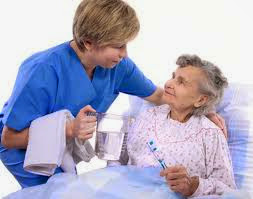Nursing Care Plan for Personal Hygiene
Definition of Personal Hygiene Personal hygiene is derived from the Greek language which means individual personal hygiene and healthy means. Personal hygiene is an action to maintain the cleanliness and health of a person's physical well-being. Personal hygiene is an individual effort in maintaining personal hygiene which includes cleanliness of hair, teeth and mouth, eyes, ears, nails, skin, and dressed in improving hygiene in optimal health (Effendi, 1997). Personal Hygiene is an act of maintaining the cleanliness and health of a person's physical and psychological well-being. The size of a person's cleanliness or appearance in fulfilling the needs of Personal Hygiene Personal differences in pain due to an interruption fulfillment. Purposes of Personal Hygiene Improve the health of a person. Illness and disability can affect immabolisasi. Maintaining the cleanliness of a person. Fixing personl hygiene is lacking. Prevent disease. Improving one's self-confidence. Crea...

